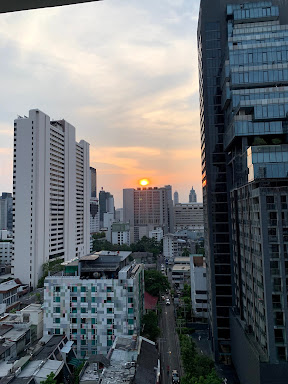JOUR 3
A table !
Passer à table, en France, est un acte sacré. On ne mange pas. On entre en communion avec la nourriture. Le repas gastronomique français n’est-t-il pas inscrit, depuis 2010, au patrimoine immatériel de l’Humanité par les Nation-Unies. Pour paraphraser Cioran : «Ailleurs, on se nourrit comme un animal. En France, manger devient un rituel, un acte de civilisation, presque une prise de position philosophique».
Puisque le quelque part où je suis né est la France, et que ce blog est, à son essence, en français, il était impossible de ne pas évoquer ce sujet essentiel : Comment est la nourriture en quarantaine. Question qui revient comme une ritournelle, quand un ami, un proche ou une vague connaissance vient prendre des nouvelles. Avant le « Comment ça va ? », vient le « Comment tu bouffes ?».
Les gastronomes seront déçus. On ne part pas sur des lièvres à la royale, des poulardes ou des mouclades. Mais on ne tombe pas non plus dans la bouillie ou l’innommable. Quatre jours se sont déjà écoulés et j’ai entamé une visite gourmandes des cuisines du monde : « tsukemen », ces nouilles japonaises froides à tremper dans un bouillon délicieux, « panaeng kai », le classique de la cuisine thaïlandaise à base de piments secs, galanga, citronnelle, graines de cumin et de poulet coupé en fine lamelles. Sans oublier le murgh makhani, curry des montagnes du Cachemire parfumé au gingembre, chili vert et du chili rouge.
Le contenant, d’infâmes boîtes en carton, ne met pas les plats en valeur. Un petit verre de Gevrey Chambertin manque cruellement. Mais depuis quand les détenus se plaignent ?
DAY 3
At table !
For the Brits, eating is barely the action of pouring liquid and food into your mouth then your stomach. The Japanese have a brilliant term for it : kuchisabishii, or “eating because your mouth is lonely”. But, eating, for French, is nearly an act of God. You don't eat. You commune with food. Since 2010, the French cuisine has been listed as an intangible cultural heritage by the United Nations. To paraphrase the philosopher Cioran: “Anywhere on the planet, you eat like an animal. In France, eating becomes a ritual, an act of civilization, almost a philosophical stance ”.
Since I was born is France, and this blog is basically in French, it was impossible not to mention this essential topic : How is food in quarantine ? That question comes up again and again and again when a friend, a relative or an acquaintance is giving me a call . Before the "How are you?" “ comes the“ How do you eat? ”.
Foodies will be disappointed. Here, no potatoes dauphinois, boeuf bourguignon or cherry clafoutis. But, to be honest, no junk food as well. I have been there for four days and already embarked on a gourmet tour of the “cuisines of the world “: "tsukemen", cold Japanese noodles to soak in a delicious broth, "panaeng kai", the classic of Thai cuisine made with dried peppers galangal, lemongrass, cumin seeds and chicken. Last but not least, the murgh makhani, curry from the mountains of Kashmir flavored with ginger, green chili and red chili.
Most of the food is reconstituted, served in disposable containers with plastic cutlery A small glass of Gevrey Chambertin is sorely missed. But since when do inmates complain ?






Pasta / rouleaux de printemps, royal ! Bon app'
RépondreSupprimer